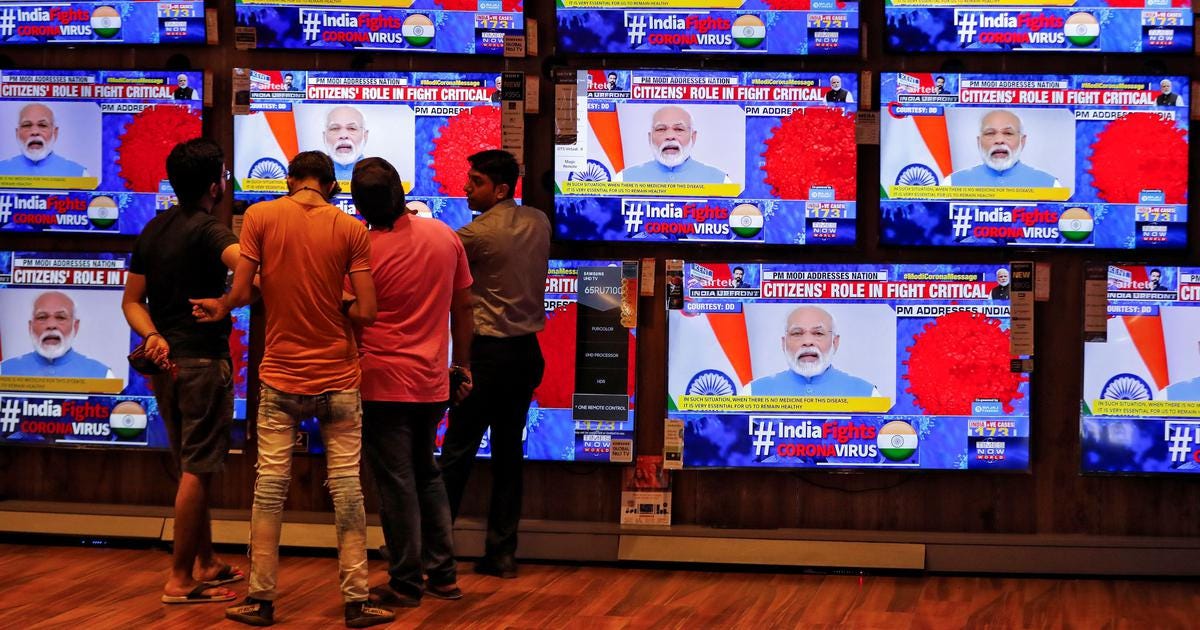Will the economic crash end the Indian middle class infatuation with Modi?
Probably not. Their support to the BJP and Modi is more ideological than economic.
Welcome to The Political Fix by Rohan Venkataramakrishnan, a newsletter on Indian politics and policy. To get it in your inbox every week, sign up here.
The newsletter is on a short break at the moment, but we've included a news story from Scroll.in's reporting team for you to read in the interim. Regular operations will resume in September. Thanks for reading!

Shoaib Daniyal writes:
Sometime in 2011, the Congress-led United Progressive Alliance saw the Indian middle class turn on it. That year, anti-corruption protests in Delhi drew significant middle-class support, prompted by wall-to-wall media coverage. At around the same time, courts and the bureaucracy started to also attack the Union government on charges of corruption, citing two cases of massive, alleged scams – corruption in the allocation of telecom spectrum as well as coal blocks (even though neither eventually resulted in any United Progressive Alliance politicians being convicted).
The Indian middle class is tiny – but as this episode shows, it can also have influence far beyond its numbers.
So what is this influential demographic thinking about the current Union government?
Economic doldrums
Economically, India’s growth is worse off that it has even been during its seven decades as an independent country. For the first quarter of 2020-2021, the Indian gross domestic product contracted by a never-before-seen nearly 24%. And even that might be an understatement, with the shrinkage in the informal sector not being properly measured. Former chief statistician of India, Pronab Sen projects that economic shrinkage could go up to 35%. For the past two decades, India appeared on the top of global GDP growth rankings – but not anymore.
The middle class were one of the primary beneficiaries of economic growth that came after the elaborate system of Central government-controls on private industry or Licence Raj was dismantled in 1991. In fact, right till 2019, middle-class Indians (along with the rich) reported high rates of income growth.
The end of this run, then, will come as a shock to the Indian middle class. In fact, research by think tank Centre for Monitoring Indian Economy shows that middle-class jobs have taken the biggest hit due to India’s draconian Covid-19 shutdown. From April to July, as many as 18.9 million salaried jobs were lost. Moreover, this pain is expected to last for some time. “While salaried jobs are not lost easily, once lost they are also far more difficult to retrieve,” explained CMIE. “Therefore, their ballooning numbers are a source of worry.”
Middle class eddies
Unsurprisingly, for the first time in six years, the Modi government is seeing small indications that the middle class could be unhappy. The past month has seen hectic online protest against the delay of the results of the Staff Selection Commission examination (for lower-grade Union government jobs) as well as a delay in conducting an exam for the Railway Recruitment Board’s Non-Technical Popular Categories. In one dramatic instance, Varun Awasthi, an educator with edutech form Unacademy, while speaking about the delayed exams, even warned that students would “pick up AK-47s instead of pens”.
Similar anger was seen against the Modi government for refusing to postpone undergraduate engineering and medical entrance examinations during the pandemic, with students launching a succesful campaign to click the “dislike” button on Prime Minister Modi’s weekly radio broadcasts.
Maybe sensing some signs of disquiet, earlier during his Independence Day speech, Modi had made sure to single out the middle class and emphasise what his government had done for them.
However, any predictions that we will see a repeat of 2011 might be jumping the gun.
An ideological relationship
For one, most of the Indian middle class loves Modi and more broadly the Bharatiya Janata Party. As many as 38% of the middle class and 44% of the upper middle class voted BJP in 2019, by far the most popular party in that category. To cut this another way: since the BJP appeals only to Hindus amongst the middle class – an astounding 61% of Hindu upper-caste voters picked the BJP in 2019 – with the caste group’s allegiance to the saffron party forming India’s most stable vote bank.
Given the close relationship between caste and class in India, the vast majority of the Hindu middle class would be upper caste.
This sort of stable relationship points to a deep ideological commitment to the BJP – rather than a transactional once that would be quickly shaken up by the economic crash.
To add to this is the fact that no other party at the moment appeals to middle-class sensibilities.
As a result, reporting by Scroll.in has shown that the middle class is hurting economically – but would stop short of blaming Modi for the crisis. In some cases, in fact, Modi is even praised by the very same people suffering as a result of his government’s policies.



Scroll.in has aptly caught the nerves of the Indian middle class Hindus